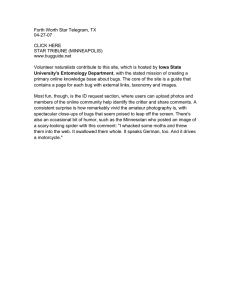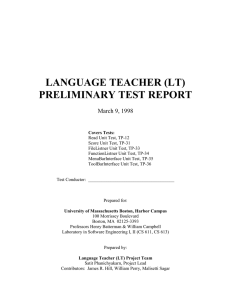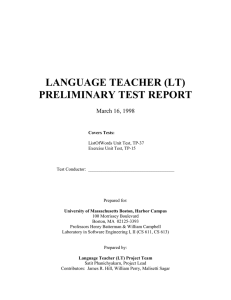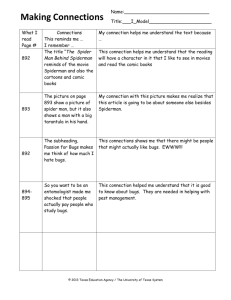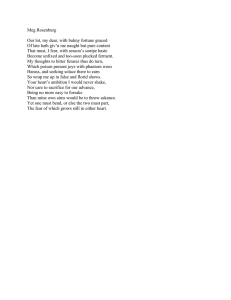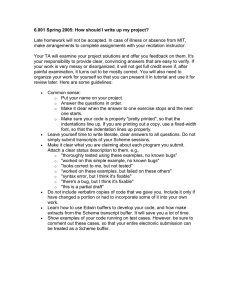View slides - SQL in the City
advertisement
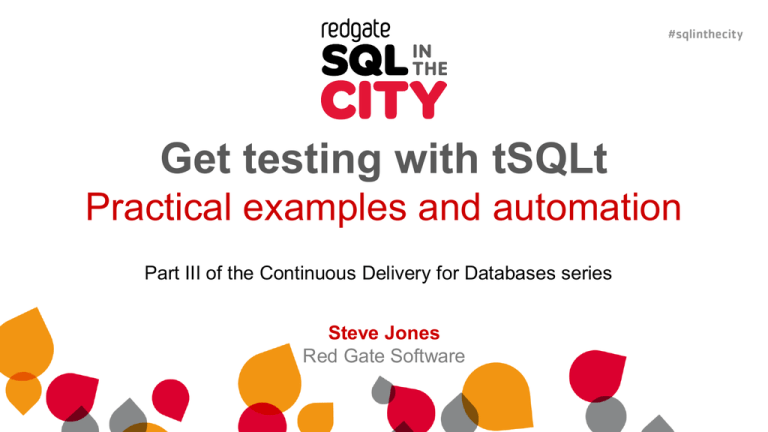
Get testing with tSQLt Practical examples and automation Part III of the Continuous Delivery for Databases series Steve Jones Red Gate Software Agenda • Goals • Who am I? • The Delivery Pipeline • Where do I test? • Why do I test? • tSQLt • Refactoring an application • Testing procedures and functions • Grouping tests • Testing exceptions Get in touch Steve Jones www.voiceofthedba.com sjones@sqlservercentral.com @way0utwest Goals • Why testing matters • Introduction to the tSQLt framework • What and how we can test • Testing as part of a deployment pipeline Database release pipeline Development Source Control Continuous Integration Testing and review Deployment Database release pipeline Development Source Control Continuous Integration Testing and review In this presentation Deployment Continuous integration – an overview Source control Build Test Publish Sync Trigger Automatically run by CI build server Release management First…the big question When do I test? Different types of test For different stages of the pipeline Development Integration Testing Pre-Production/ Staging QA Unit tests Integration tests Acceptance tests Deployment validation Behaviour validation Performance tests Other validations Production Why test? “Fix bugs as soon as you find them” • Unfixed bugs camouflage other bugs • Unfixed bugs distract the entire team • Unfixed bugs suggest quality isn’t important • Unfixed bugs hinder shortnotice releases • Discussing unfixed bugs is a waste of time • Unfixed bugs lead to inaccurate estimates • Unfixed bugs lead to duplicate effort • Fixing familiar code is easier than unfamiliar code • Unfixed bugs lead to unreliable metrics • Fixing a bug today costs less than tomorrow The next question: What do I test? How is data retrieved, stored and maintained in your application? “[SQL code] includes views, stored procedures, functions, triggers, the creation of tables and the relationships between them, and query statements embedded in other programming languages.” “…Writing this code often involves decisions about the nature of data being processed, complicated joining and filtering, performance tuning, data cleansing, replication and data maintenance.” Source: Sebastian Meine and Dennis Lloyd – “SQL Server Unit Testing with tSQLt” – simple-talk.com What do we test? • Calculations in procedures and functions • Constraints • Edge cases of data DML • Expected behavior of data DML • Error Handling • Standards Demo Standards • Ensure that the standards you care about are followed. • SQLCop – sqlcop.lessthandot.com • Easy to write your own Why tSQLt? • Free framework, similar to nUnit/jUnit • Tests written in T-SQL • Can use SSMS IDE • Run tests singly, in groups and in any order • Self-contained tests – isolated transaction • Includes common assertions to reduce repetitive coding • Requires the SQLCLR Structure of tests • Classes • Group by object/area being tested • Layout • • • Assemble Act Assert • Tests fail first Our user story… Reader on our Simple-Talk website: I want to be able to see how long it will take me to read an article. Our tasks… We need to refactor and adjust the reading time for articles To do Add a column to our table Test an edge case Proc to update reading time Group tests and execute Doing Done Demo Testing the API • Our first test • tsqlt.AssertResultSetsHave SameMetaData Our tasks… We need to refactor and adjust the reading time for articles To do Proc to update reading time Test an edge case Group tests and execute Doing Add a column to our table Done Demo Procedures and functions • Test the function • Create a new procedure • Isolate the procedure from the function in a test Our tasks… We need to refactor and adjust the reading time for articles To do Doing Proc to update reading time Test an edge case Group tests and execute Done Add a column to our table Exceptions • Our code needs good error handling • We want to test for this by: • Creating errors with edge cases • Testing for specific exceptions when we use bad data Demo Exceptions • Send in bad data in a test • Update our procedure with error handling • Include a new test to catch the exception Exceptions • • • • • • • NULL -x 0 Long strings (esp char) Nvarchar v varchar Int/char v datetime Formatting (mm/dd/yyyy v. dd/mm/yyyy) Our tasks… We need to refactor and adjust the reading time for articles To do Doing Test an edge case Group tests and execute Done Proc to update reading time Add a column to our table Building a Test Suite • By continuing to grow your test suite with each change, developers spread the load • By having a large suite, we have better code coverage • We can easily regression test • However, we need to group tests… Our tasks… We need to refactor and adjust the reading time for articles To do Doing Done Proc to update reading time Group tests and execute Add a column to our table Test an edge case Write one extra test Goals • Why testing matters and what it contributes • Introduction to the tSQLt framework • What and how we can test - examples • Testing as part of a deployment pipeline THE END Any questions? www.voiceofthedba.com www.sqlservercental.com www.simple-talk.com Patterns and Practices library sjones@sqlservercentral.com @way0utwest References • Continuous Integration – http://en.wikipedia.org/wiki/Continuous_integration • Getting Started Testing Databases with tSQLt https://www.simple-talk.com/sql/t-sqlprogramming/getting-started-testing-databases-withtsqlt/ Image sources Author Source Information Peter Kaminski Flickr Safe Area – Flickr. This file is licensed under the Creative Commons Attribution 2.0 Generic license. Harold Groven Flickr Fuse box – Flickr. This file is licensed under the Creative Commons Attribution-ShareAlike 2.0 Generic (CC BY-SA 2.0) license. William Warby Flickr 1up - Flickr. This file is licensed under the Creative Commons Attribution 2.0 Generic license. Get in touch Steve Jones www.voiceofthedba.com sjones@sqlservercentral.com @way0utwest
